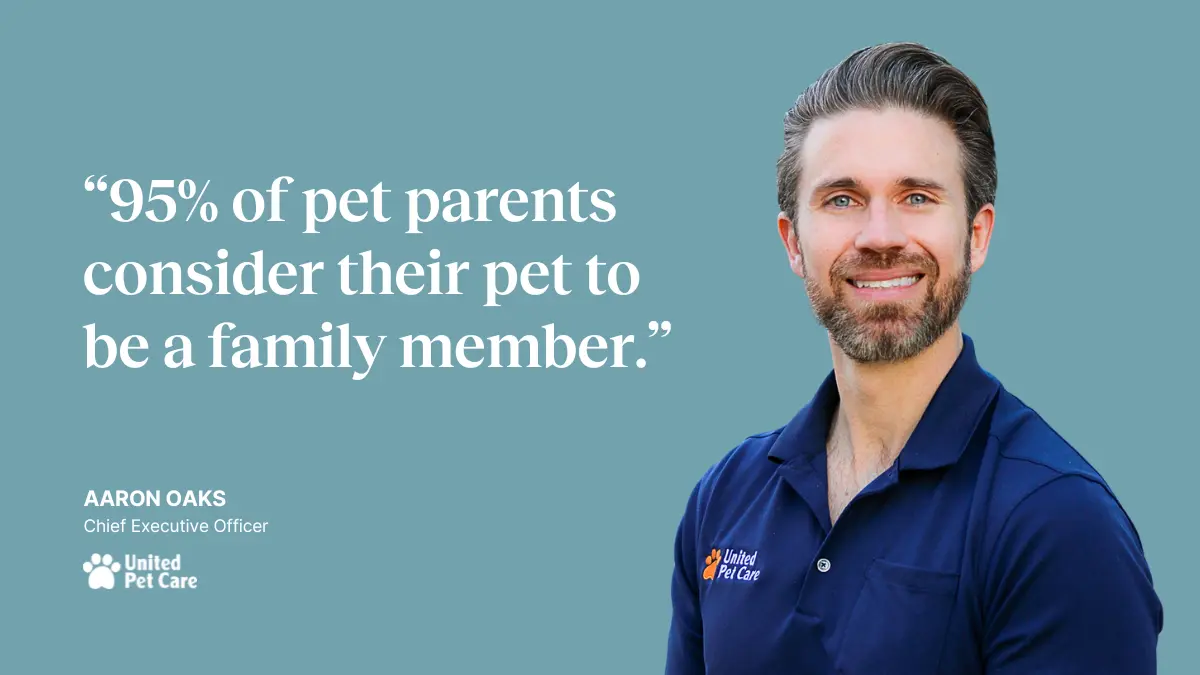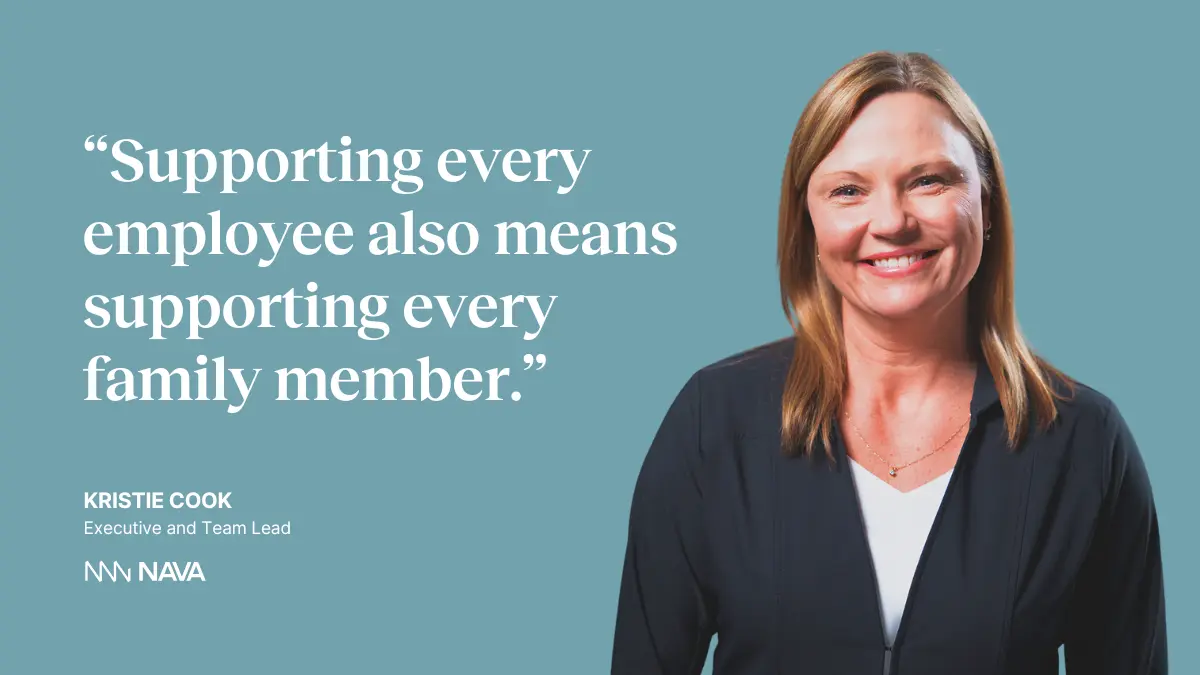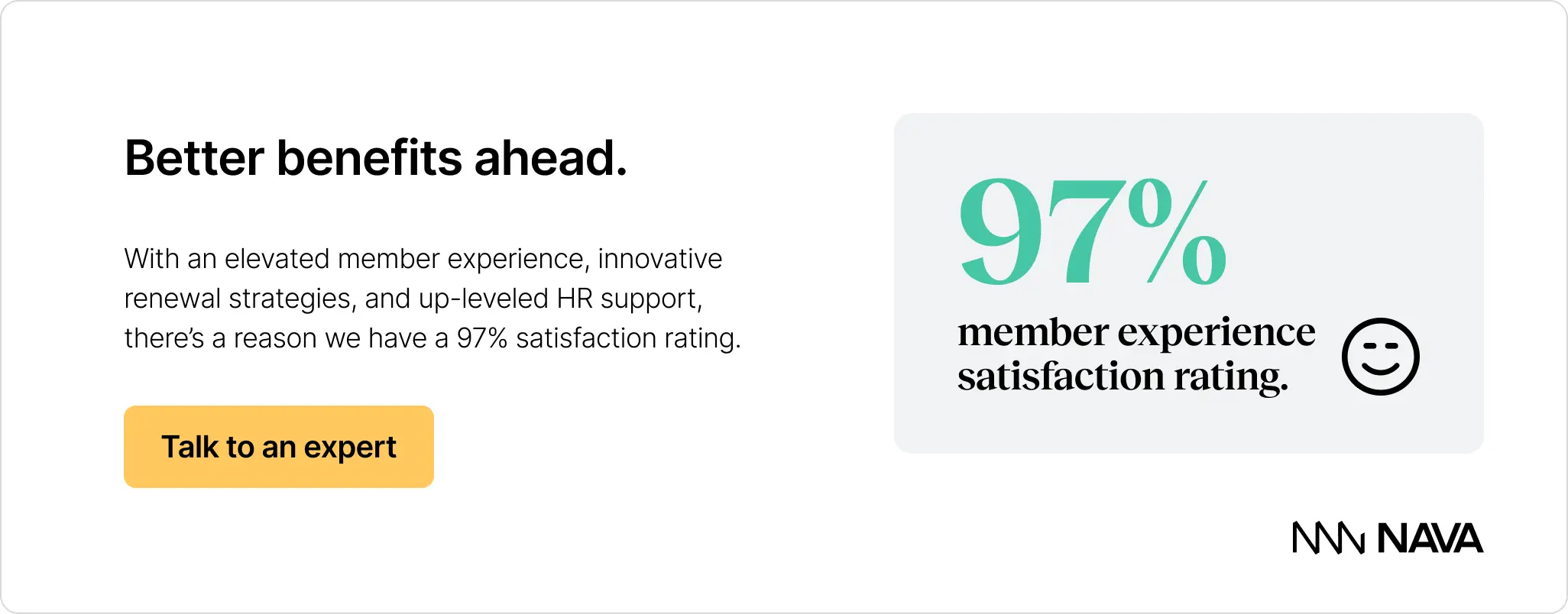The complete guide to pet insurance as an employee benefit

Pet benefits are becoming an essential part of modern total rewards as more employees see pets as part of their family and struggle with rising veterinary costs. This guide breaks down why pet insurance matters, how different benefit options work, and what HR teams should consider when evaluating or implementing a pet benefit. With the right approach, employers can improve employee wellbeing, strengthen culture, and offer meaningful support at little to no cost.
Pets have always held a special place in our lives, but over the last several years their role in the workplace has changed dramatically. Today, employees increasingly consider pets part of their core family unit. That shift has real implications for HR leaders who are refining benefits strategies to support the whole employee.
In a recent webinar hosted by Nava Benefits and United Pet Care, Kristie Cook, Account Executive and Team Lead on Nava’s Client Success team, and Aaron Oaks, CEO of United Pet Care, explored why pet benefits are gaining traction, how the market has evolved, and what HR teams should consider when evaluating or implementing pet insurance.
Pet benefits are no longer a niche perk. They’re becoming a meaningful component of modern total rewards offerings, especially as younger generations reshape workforce expectations. In this guide, we outline what pet insurance is, why it matters, how employers can offer it successfully, and the most important considerations for HR teams assessing pet benefit solutions.

Why pet benefits matter more than ever
The rise of pet ownership during and after the pandemic fundamentally reshaped household dynamics. With many employees working from home and seeking companionship, millions adopted pets. Those pets are now aging into higher-cost care years. At the same time, Millennials and Gen Z are delaying or opting out of parenthood and treating pets as their starter family.
As a result, employees are coming to the workplace with new expectations about the support they receive for both their people and their pets.
Here are a few reasons pet benefits have become so important:
- Employees increasingly view pets as family. In our webinar, United Pet Care CEO Aaron Oaks shared that over 95% of pet parents consider their pet a family member.
- Pet care needs have a real influence on job decisions. A recent survey found that 60% of pet-owning employees would consider leaving a job if it interfered with caring for their pet, which directly affects engagement, absenteeism, and overall well-being.
- Vet care and pet-related services have become significantly more expensive in recent years. One industry report found pet-industry inflation at 4.7% in January 2024 — more than 50 % higher than the national inflation rate of 3.1%.
- Financial strain is common. With half of American workers unable to cover a $500 unexpected expense, a single pet emergency can create major financial stress.
For employers, this growing demand represents an opportunity. Pet benefits offer meaningful emotional and financial support while costing the employer little or nothing to provide.

What pet insurance and pet benefits actually are
There are more options than ever before for employers looking to support the pets in their employees’ lives. These benefits generally fall into several categories:
1. Traditional pet insurance
Accident and illness insurance for pets operates similarly to human health insurance. Policies are individually rated based on age, breed, and pre-existing conditions. Claims are processed through reimbursement. This is typically an individual product offered through the workplace.
2. Pet discount or membership plans
United Pet Care’s membership model is an example of this newer approach. Rather than underwriting each pet, employers can offer a flat-rate plan where every pet qualifies and pays the same amount. Employees receive discounted rates through a participating network of veterinary providers. These programs often include both wellness and emergency care discounts.
3. Virtual veterinary support
Pet telehealth has grown significantly. Virtual care hotlines and video consults help employees triage after-hours concerns and avoid unnecessary emergency vet visits, which often start at $500 or more just to walk through the door.
4. Wellness plans
Pet wellness plans allow employees to pre-fund preventive care like vaccines, dental cleanings, and routine exams. These still operate through reimbursement but can encourage more consistent preventive care.
5. Additional pet-friendly perks
Some organizations take pet support even further by offering paw-ternity leave, pet bereavement leave, discounted services, or pet-friendly workplaces. Even simple culture-building touches, like Slack channels for pet photos, strengthen connection across teams.
Why pet benefits are a high-impact, low-cost employer offering
Pet benefits provide HR teams with a rare combination: a high-demand benefit with low overhead. These pet-centric benefits offer support for:
- Recruitment and retention: 82% of HR professionals believe pet benefits influence recruitment and retention. Employees at organizations that offer pet benefits report higher satisfaction and loyalty.
- Culture and morale: At Nava, our #pets Slack channel is consistently one of the most active. Sharing pet photos and stories creates moments of connection that ripple across the organization.
- Reduced absenteeism: When employees can’t access affordable vet care, they’re more likely to miss work, experience stress, or struggle with focus. Pet benefits reduce that burden.
- Affordability: Most pet benefits require no employer contribution. For employers navigating difficult medical renewals or rising costs, pet benefits can be a morale-boosting addition that doesn’t strain the budget.

How pet benefits work behind the scenes
One of the biggest concerns for HR leaders is administrative lift. Pet benefits work differently depending on the type of plan, so it’s important to understand the operational impact.
Traditional insurance
This type of pet insurance requires rating each pet individually, which means payroll deductions fluctuate as rates adjust. This can introduce ongoing administrative updates, especially if employees enroll throughout the year.
Membership or discount plans
These plans offer a simpler experience. Flat-rate pricing eliminates the need for constant deduction changes and allows every pet to enroll. These solutions also tend to integrate cleanly with most Ben Admin systems because they require minimal census data.
Payroll vs direct bill
Some employers choose direct billing, but payroll deduction generally increases participation. Employees appreciate the predictability and ease of having costs deducted automatically.
What HR teams should consider when selecting a pet benefit
When evaluating pet benefit partners, keep these criteria in mind:
- Simplicity: Employees should understand the benefit quickly and easily. Complex plan designs or reimbursement rules can create confusion.
- Transparent pricing: Flat rates or clear pricing tiers reduce the administrative burden on HR.
- Ease of administration: Prioritize carriers that integrate with your Ben Admin or HRIS, minimize census requirements, and eliminate manual work.
- Employee experience: Look for strong customer support, straightforward enrollment, and accessible educational materials.
- Compliance: Pet insurance is regulated at the state level and requires P&C licensing for brokers. Discount plans have fewer regulatory complexities and do not require additional filings like Form 5500.
How to communicate and drive engagement
Pet benefits are naturally engaging and tend to generate interest when promoted well. To drive adoption, focus on:
- Early and repeated communication
- Clear and visual explainers
- Short enrollment steps
- Examples of real savings
- Encouraging leaders and pet owners to share their stories
- Using photos of pets in graphics and emails to capture attention
As Aaron Oaks shared during the webinar, pet benefits can also unlock greater engagement in other voluntary benefits. When employees experience real value from one benefit, they’re more likely to explore others.
Key takeaways
- Supporting employees means supporting their whole household. Pet benefits acknowledge the important role pets play in employees’ lives and strengthen overall well-being.
- Pet benefits are timely, relevant, and cost-effective. They offer meaningful emotional and financial support without increasing employer costs.
- They can boost culture, engagement, and morale. Pet benefits demonstrate care for employees’ real, everyday needs and help foster a more connected workplace.
- They’re especially valuable in challenging renewal years. When medical plan costs rise or benefits must be scaled back, pet benefits provide a positive message to employees.
- Choosing the right partner matters. Your benefits broker or consultant can guide you toward the solution that fits your workforce, budget, and administrative capacity.





.png)
.webp)
.webp)